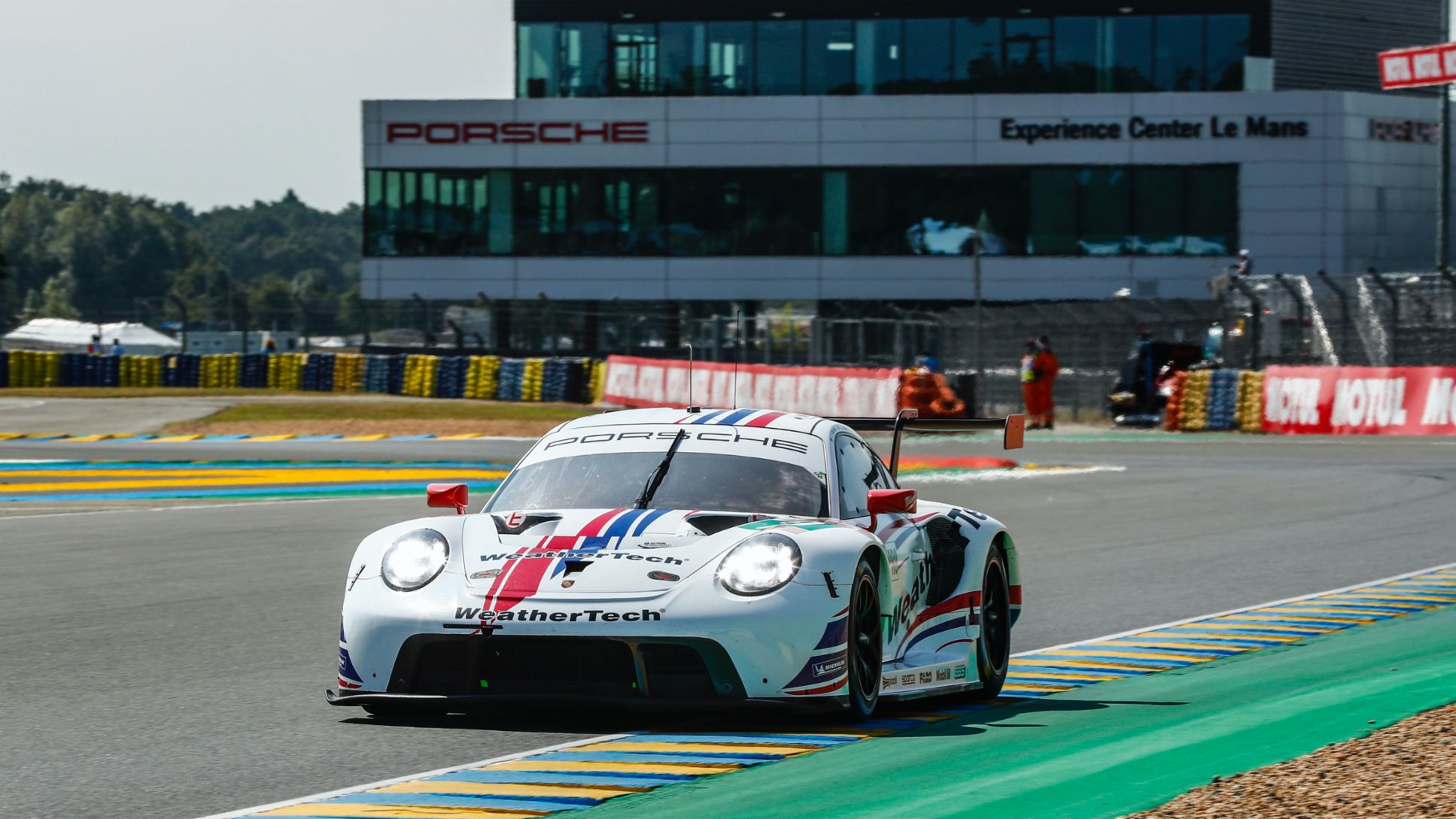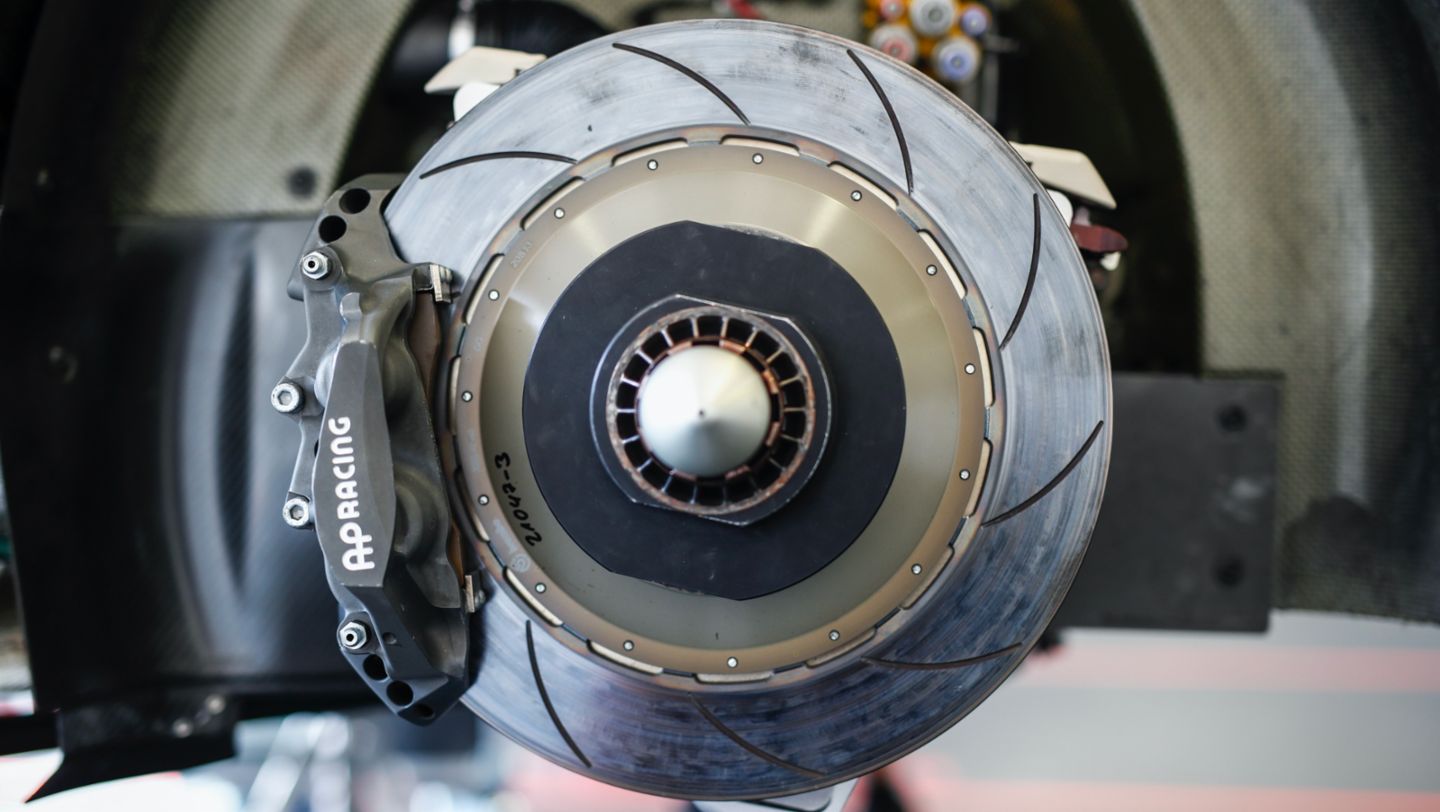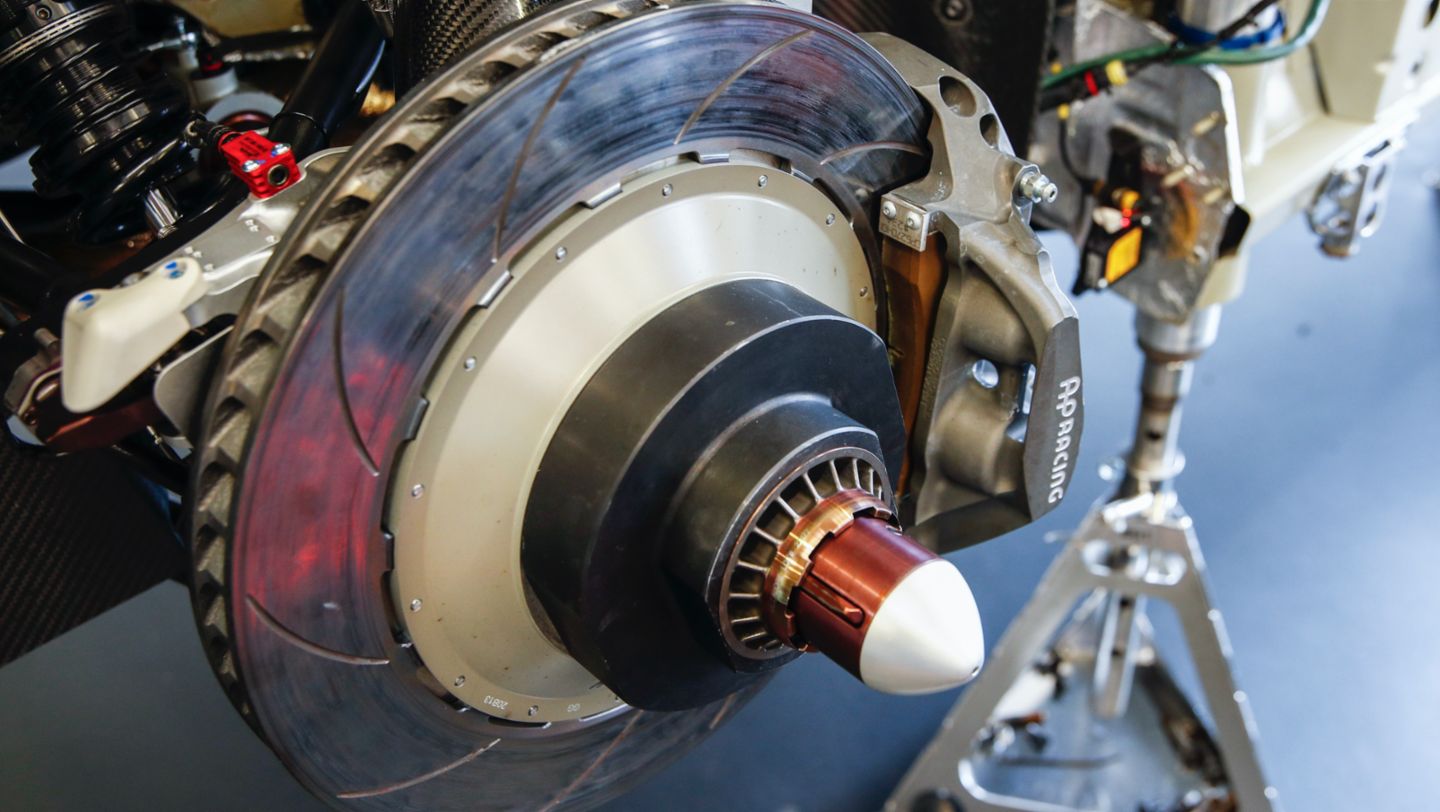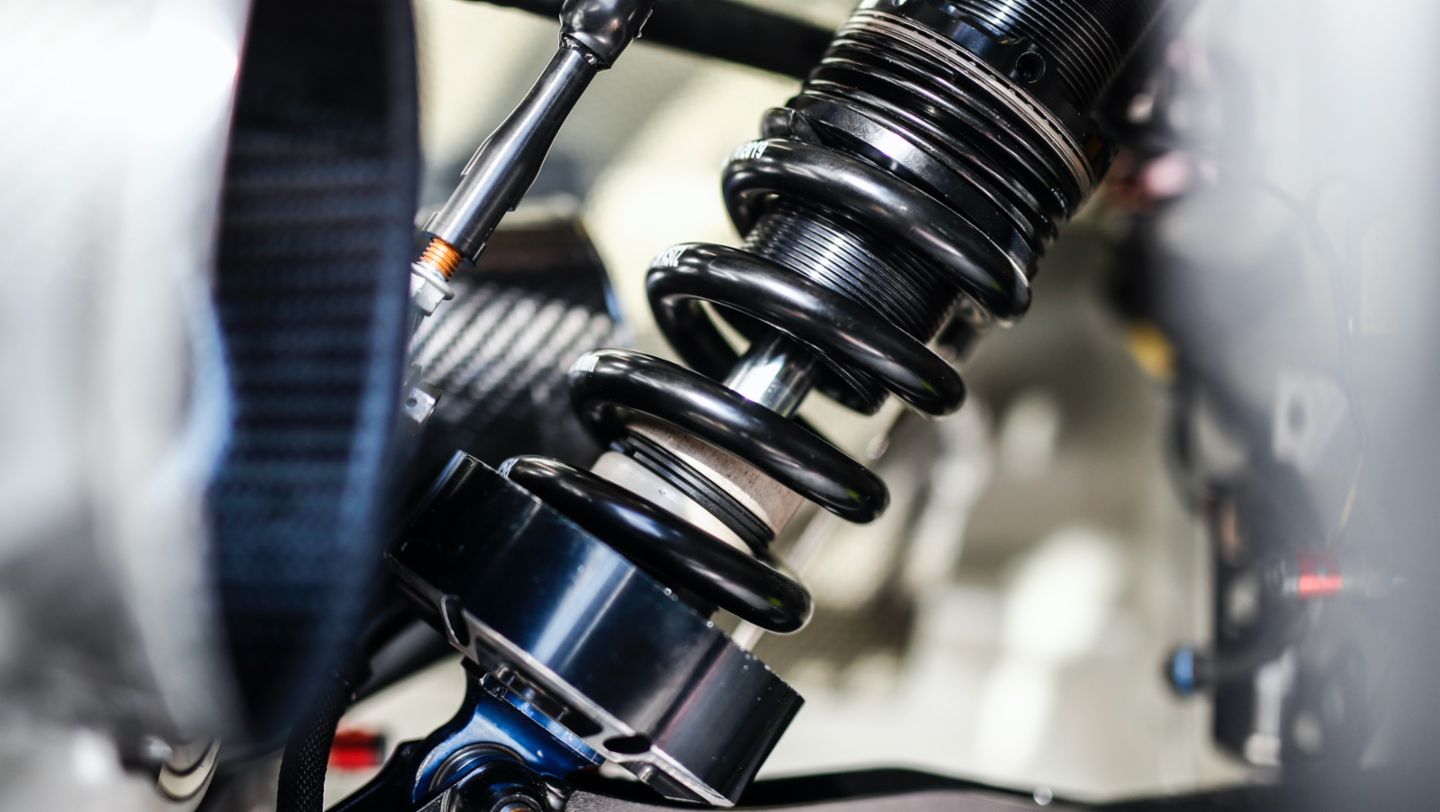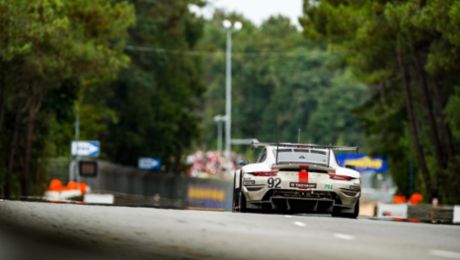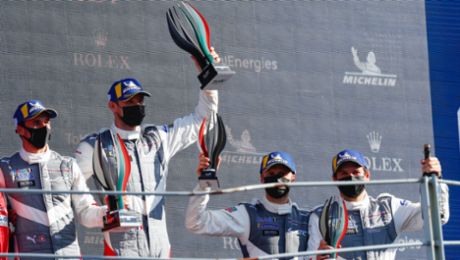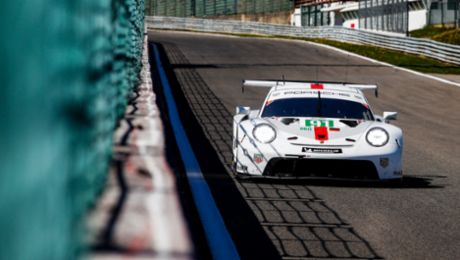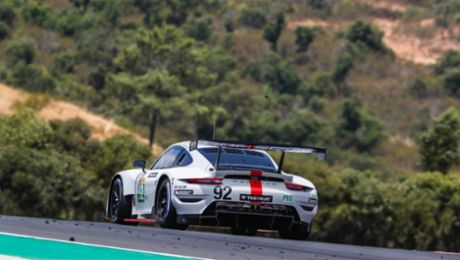The 24 Hours of Le Mans. 20 September, 2020. It’s 14:07 on the Sunday. Works driver Laurens Vanthoor pulls into the pit lane in the Porsche 911 RSR and for the final time the Manthey team refills the fuel tank of the No. 92 car.
The windscreen is cleaned once more;, the driver’s water bottle is replaced. After just a few seconds, the car is lowered and the six-cylinder boxer roars back to life, snarling up through the gears as Vanthoor charges back out onto the 13.626-kilometre circuit. Full throttle towards the Dunlop Curve, he carries momentum over the kerbs of the corners that follow, with maximum acceleration through Tertre Rouge approaching the first chicane, then hard on the brakes – over and over again ... For 24 long hours, the 911 RSR has to withstand extreme stresses at Le Mans, the clock showing no consideration for the car’s heavily stressed technology.
“Of course, our Porsche 911 RSR is designed for this – we developed this vehicle for extreme endurance runs,” explains Alexander Stehlig, Head of Operations FIA WEC. “The car’s components are designed and extensively tested with these challenges in mind. We carry out a lot of test bench work and assess the entire package in numerous test and development runs. Theoretically, a 24-hour race shouldn’t be a problem. But in practice, this sometimes looks a bit different.”
The Porsche 911 RSR: developed for extreme enduranc
“Our cars have to cope with around 20,000 gearshifts over the race distance,” says Romain Gineste, senior performance engineer in the Porsche GT Team. “Don’t forget: the race isn’t everything – the gearbox has to do its job in every practice session and qualifying.” In previous years, all teams installed a completely new drivetrain on the Friday of the Le Mans week, but since 2018 the components must remain in the vehicle for the entire race week. “That was a consideration for us,” continues Stehlig, “because we also have to constantly keep an eye on the workload of our team. We swap out the parts after the pre-test and then leave them in the car until the end of the event. This allows the mechanics to focus on the essentials on the Friday so that they are able to give their best during the very long race. This has absolutely proven its worth for us. Many of the other teams do the same thing.”
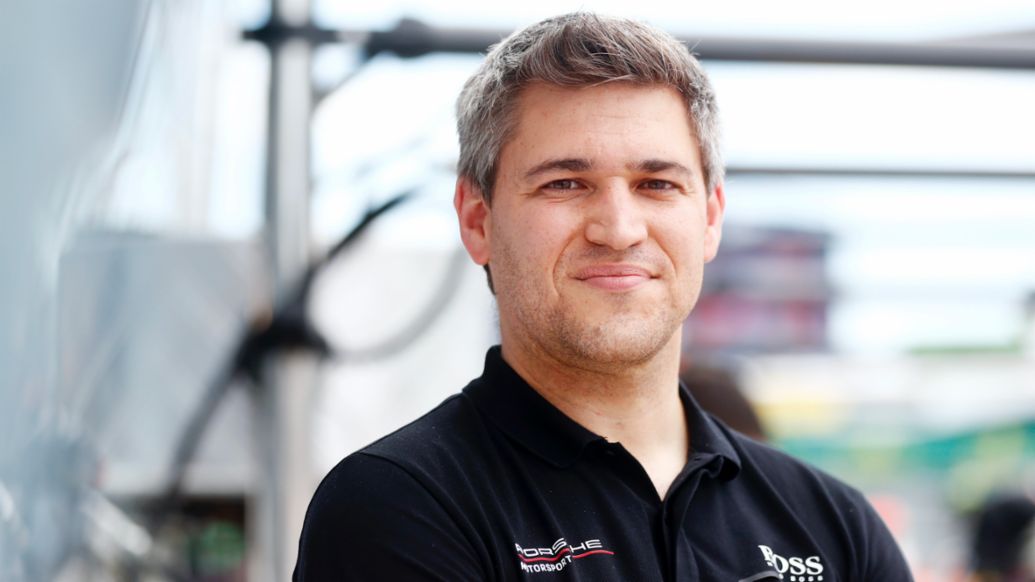
This operational plan means that the gearbox in the Porsche 911 RSR, for example, has to execute almost 7,000 more gearshifts, which must work flawlessly at all times – and at lightning speed. In the sequential six-speed gearbox of the 911, a gearchange takes a mere 15 milliseconds. The high torque of the 4.2-litre boxer engine thrusts the Weissach racer forward with almost no interruption. “Our current RSR doesn’t use a pneumatic system to change gears like its predecessor, but an electromechanical one. This works more precisely and, above all, faster,” explains Stehlig. “We are really, really good in this regard,” grins Gineste: each of the approximately 28 million spark-plug firings in the six-cylinder engine should translate to maximum propulsion during the 24-hour race.
Those who brake late are faster for longer: this was the focus of the Porsche team when they developed the braking system for the 911 RSR. At Le Mans, this system comes to the fore in 13 places per lap. Time and time again, the drivers stamp on the brakes as they hurtle towards the tighter corners such as the two chicanes on the famous Mulsanne straight, or at the entrance to the Mulsanne curve. In total, they depress the brake pedal about 4,000 times and the temperatures of the brake pads and steel brake discs soar to more than 400 degrees Celsius. Sophisticated ventilation cools the system down again within a few metres. “The brakes reach their absolute limit in the 24-hour race. The systems are so good now that we can manage with just one brake service at Le Mans,” says Stehlig. The experienced engineer wants to avoid any possible risks: “We always play it safe and change the brakes on at least the front axle. It doesn’t even cost us a minute because the parts are completely pre-assembled. We do this, for example, during a safety car phase without any major consequences to our position in the race.”
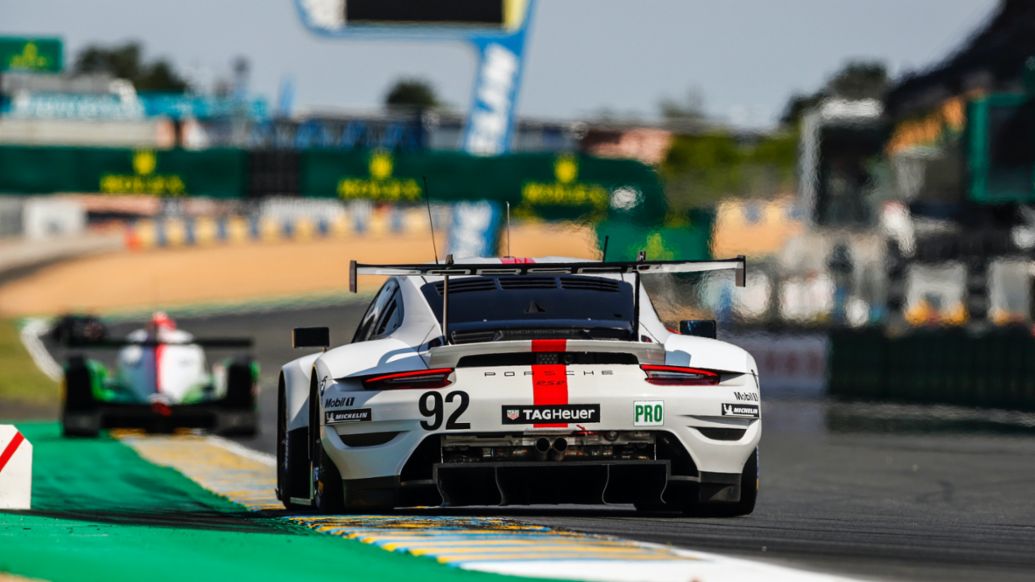
The six-cylinder powerplant in the 911 RSR is not the only boxer in the vehicle. Over the Le Mans 24 Hours, the shock absorbers have to take numerous hard hits without showing any visible cuts. Thousands of vibrations due to the uneven road surface are swallowed by the kinematics without complaint. “The system is compressed to its limit 20 times per lap when driving over kerbs. The car has to rebound every time. The damper system receives almost 7,000 direct hits over the entire race distance,” says Gineste. Racing tyres from Michelin absorb some of the horizontal forces. Only 60 tyres may be used over the course of the challenging 24 hours in consistently dry conditions. At the end of this gruelling endurance run, when all of the components have done their job as required, the best-case scenario is a greatly deserved reward: a big celebration at Le Mans.
